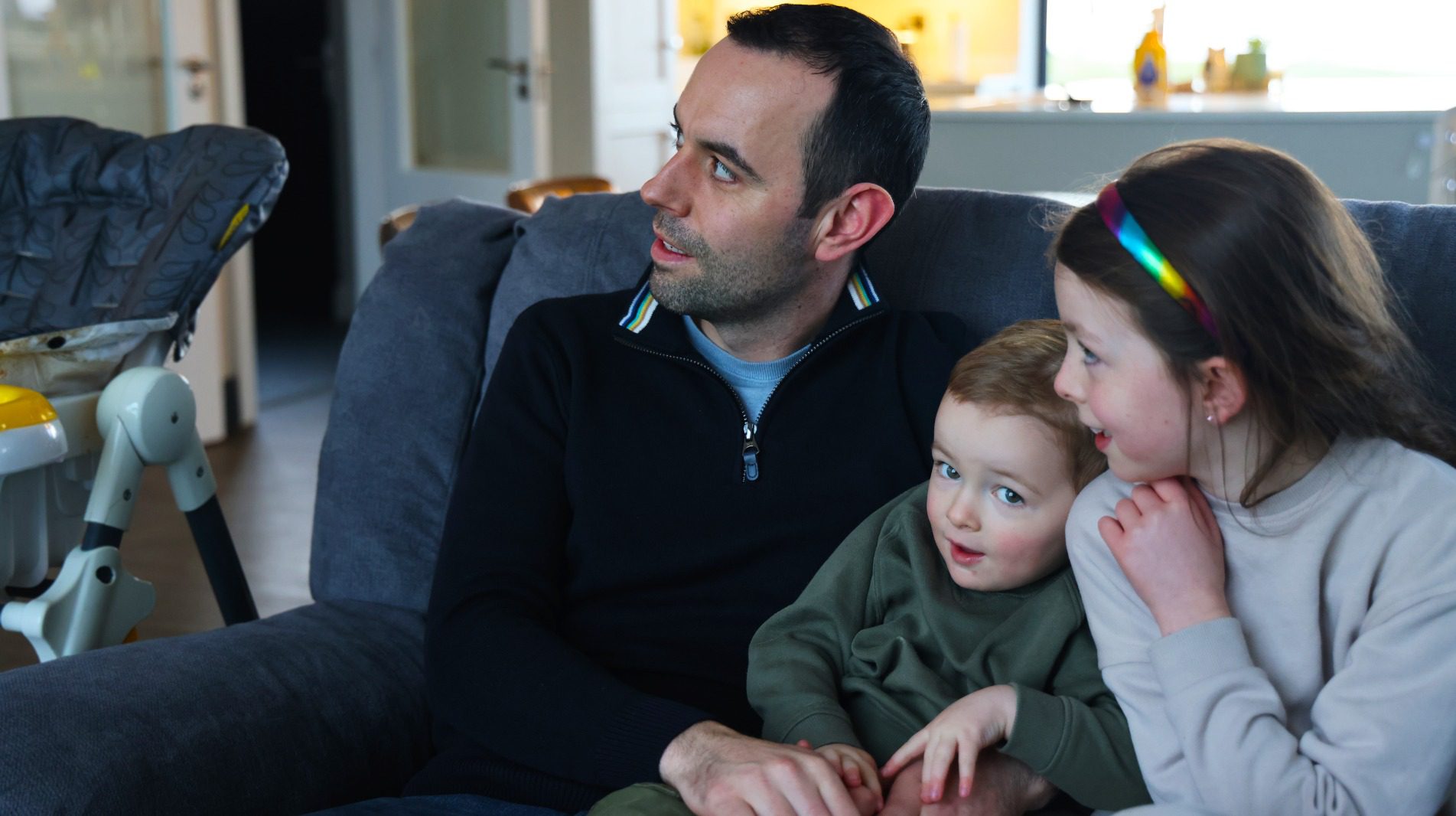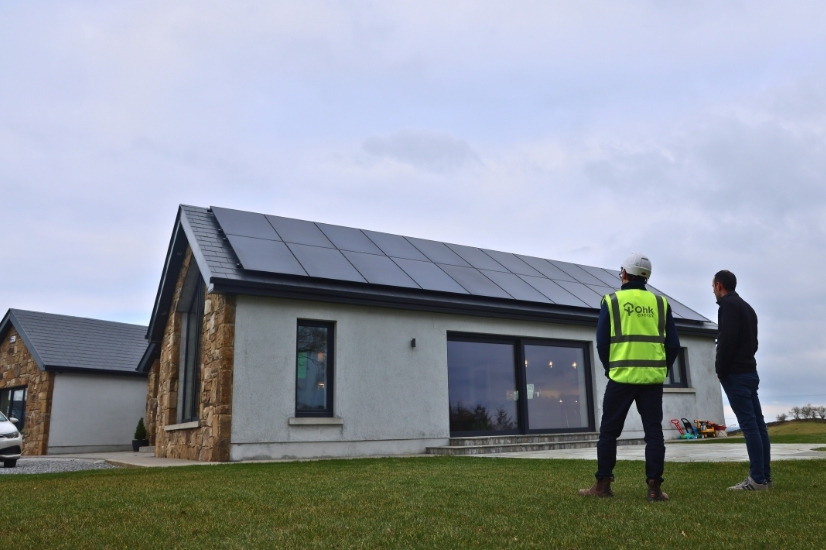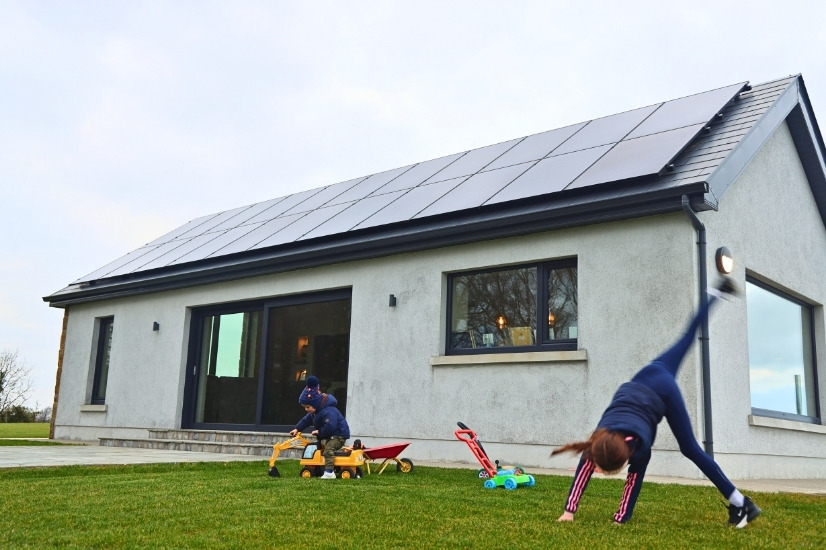
We were delighted to take part in a blog series with Aviva Insurance, where our specialists shared expert tips and insights into home retrofitting.
Inspired by this series, below we deliver even more detail and share more valuable expert insights.
“Potentially by 100% – at least during certain months. Different works will impact bills differently. And each home and homeowner’s energy usage and behaviour vary. Therefore, the exact savings depend on individual circumstances. However, retrofitting quality windows, doors and insulation, combined with a heat pump and sufficient solar power, can reduce bills by up to 100%. This is more likely to occur during summer months. Bills during winter months would also be substantially lower.”
Jamie, One Stop Shop Manager at Ohk energy
“There are many retrofit options available, each with different levels of disruption. And there’s also individual needs and subjectivity involved too. Each step should be customised for each home and homeowner. This is why it’s important homeowners choose a company that partners with them throughout their complete energy upgrade and decarbonisation journey.
But, in saying that, typically adding attic insulation is the least disruptive followed by external wall insulation – both usually have less impact on a homeowner’s day-to-day life. Next would be installing solar PV (usually completed in one day with only a temporary power interruption), followed by internal wall insulation upgrades. Heating system, window and door upgrades are typically more disruptive, especially in colder months. Finally, retrofitting floor insulation can be very disruptive and may not suit everyone.”
Gearóid Whelan, JFW Renewables Founder & Ohk energy CRO

“High bills, a low Building Energy Rating (BER), the time since last upgrade, rapid heat loss, etc. There are many ways to tell if your home is suited to retrofitting. But the best way is to get a professional assessment. A BER assessment is a good place to start if you plan to make one or two upgrades. But if you plan to make more and use a One Stop Shop service, a Home Energy Assessment (HEA) is more suitable. Grants are available for these assessments, and there is no obligation to proceed with any works after an inspection.”
Jamie, One Stop Shop Manager at Ohk energy
“The SEAI website is a good starting point; you’ll find registered contractors specialising in various retrofit works. Contractors must meet SEAI technical and quality standards and satisfy other requirements, such as holding appropriate insurance, to become registered SEAI contractors. This can help you shortlist potential retrofitters. To select the best partner, enquire about workmanship and product warranties, check for accreditations (e.g., ISO), ask about business partnerships, read independent reviews, request quotes (this can give an insight into the company’s quality of service, not just price), and ask about their aftercare support.”
Jamie, One Stop Shop Manager at Ohk energy
“Solar PV panels and solar thermal panels both capture energy from the sun. They do this differently and for different purposes. Solar PV panels convert sunlight into electricity, while solar thermal panels concentrate sunlight to heat water flowing through tubes. Unlike solar thermal panels, PV panels can power household appliances, lighting and any other electric device in a home. When combined with a diverter, PV panels can also heat water, similar to solar thermal panels. Retrofitting solar PV provides greater flexibility, as it can meet both electrical and water-heating needs.”
Sean O’Shea, Solar Installation Sales Manager at Ohk energy

“There are many other retrofitting options. But, in terms of options where SEAI grants are available, these generally fall into 3 categories: One Stop Shop, Individual Home Energy Upgrades and Fully Funded Energy Upgrades. The specific works in these categories generally include retrofitting heat pumps and heating controls, upgrading attic and wall insulation (cavity, internal and external), and upgrading windows and doors. Other options can include upgrades to ventilation, ceiling and floor insulation, and repairs to defective concrete blocks. Secondary works, depending on eligibility, may also be available and can include draught-proofing, adding lagging jackets and energy-efficient lighting.”
Jamie, One Stop Shop Manager at Ohk energy
Various types of heat pumps are available (air-source, ground-source and water-source), and while some models offer cooling, this feature is generally less needed/used in Ireland. Retrofitting a heat pump can cover 100% of a home’s hot water and heating needs, and they can work with existing radiators and underfloor heating. Heat pumps can reduce energy bills substantially, especially when combined with solar PV. Typically, an air to water heat pump alone (with the current €6,500 SEAI grant) can pay for itself in 6-7 years in Ireland.”
Ollie Hughes, Heat Pump Manager at Ohk energy
We hope these insights help you better understand home retrofitting, including the options and support available to you.
As well as offering trusted home insurance in Ireland, Aviva is also helping homeowners make informed home upgrade decisions through their expert-led blog series.
We were delighted to contribute to this initiative and share our expertise.
If you’re ready to make home energy upgrades and would like more detail, we’d be happy to help – check out our Solar Panels, Heat Pump and One Stop Shop solutions.